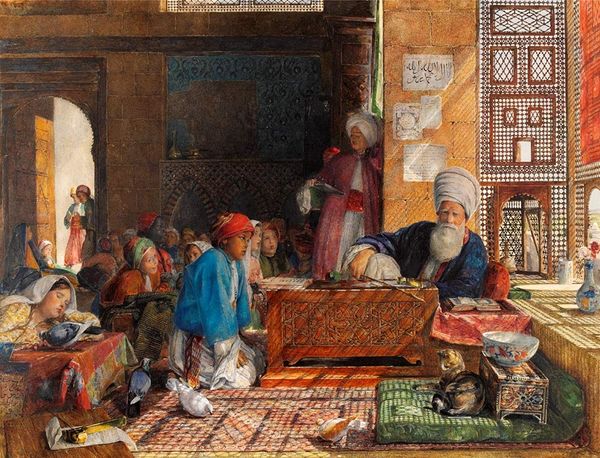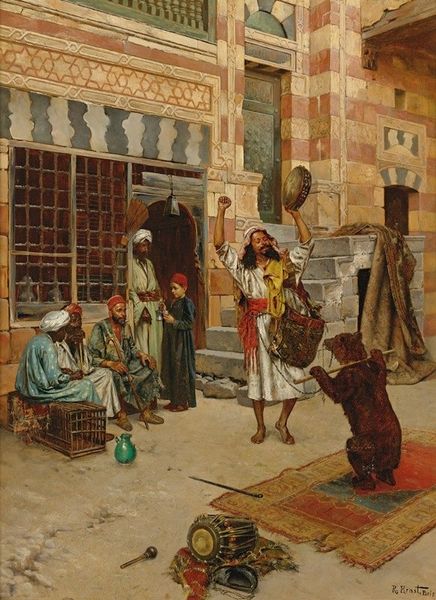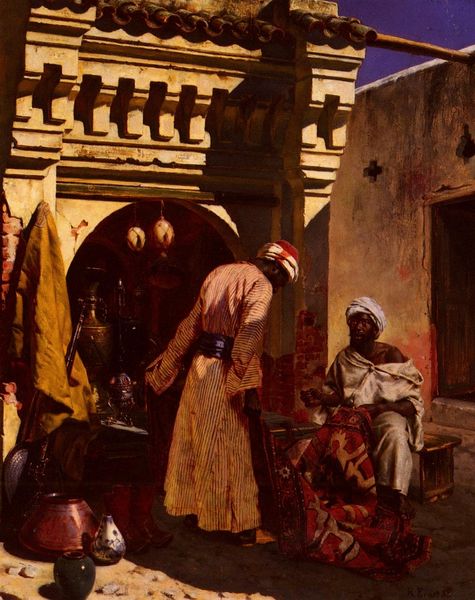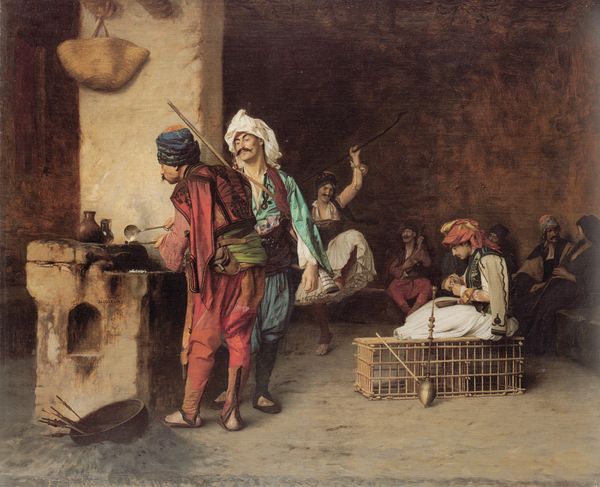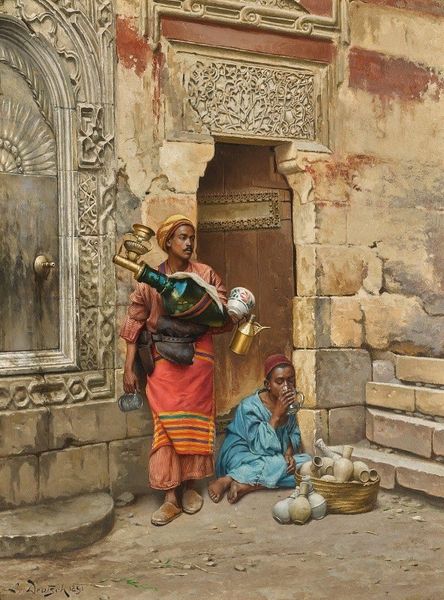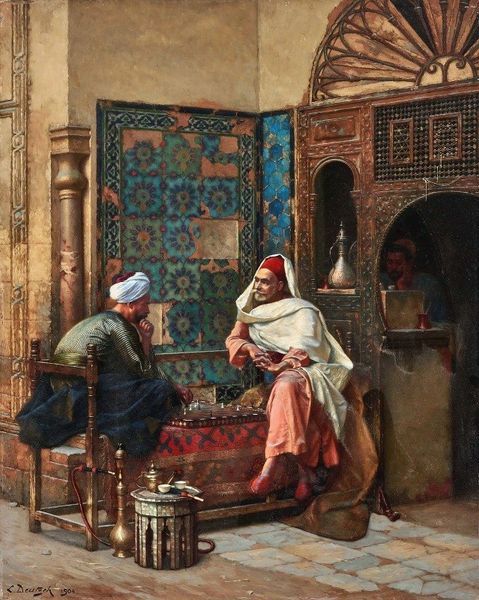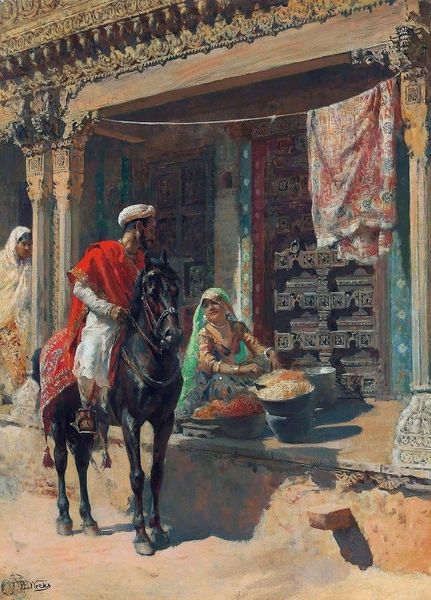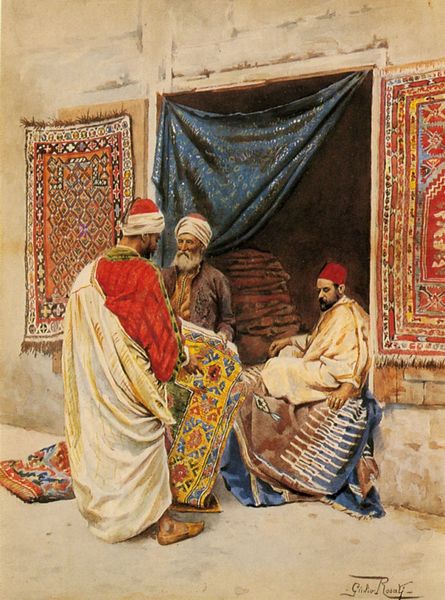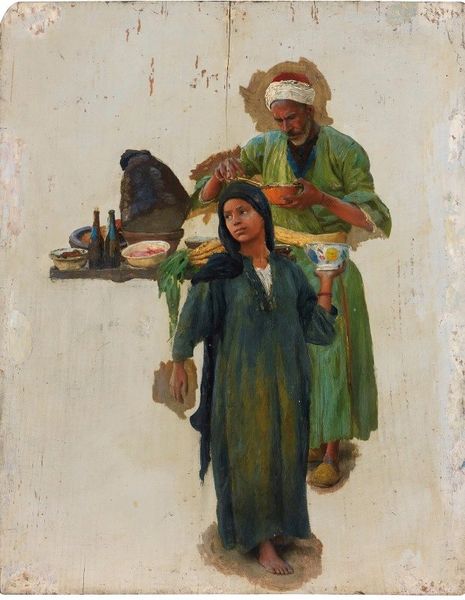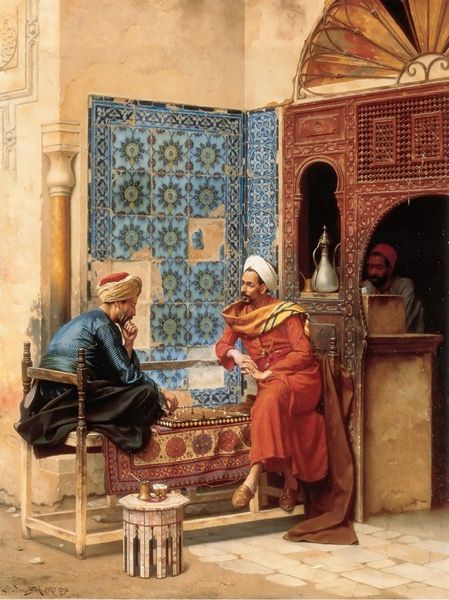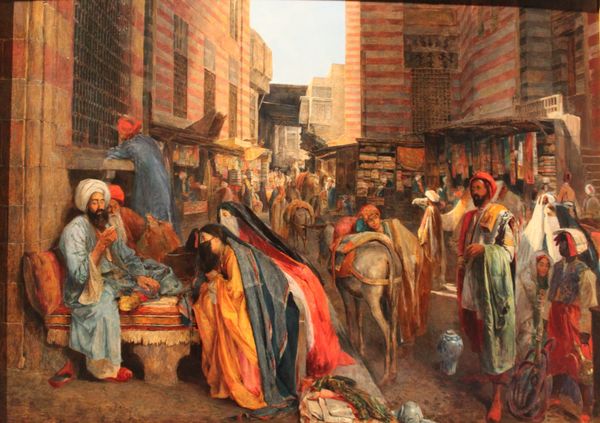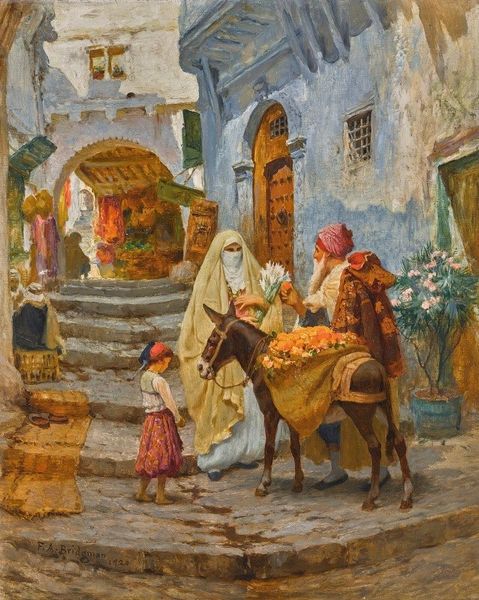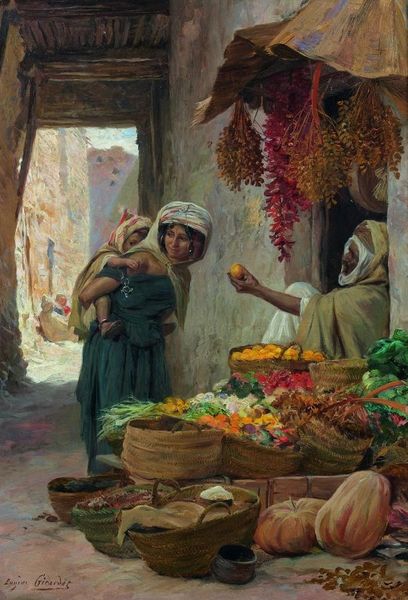
oil-paint, impasto
#
gouache
#
oil-paint
#
oil painting
#
impasto
#
romanticism
#
orientalism
#
genre-painting
Copyright: Public Domain: Artvee
Curator: Welcome. Today, we’re looking at a work titled "The Carpet Seller" by Rudolf Ernst. Ernst was part of the 19th-century Orientalist movement. Editor: The first thing I notice is the sheer density of detail! My eyes just keep jumping. It’s like stepping into a bustling marketplace with a hundred conversations happening at once. But at the same time, it is quite… staged? Curator: The composition certainly contributes to that feeling. Orientalist paintings, while appearing to document scenes from the Middle East and North Africa, often catered to European fantasies and preconceptions. Notice how meticulously Ernst renders each textile, each tile, each ornament. It’s a display of craftsmanship intended to evoke a sense of exotic luxury. Editor: Right. I mean, look at how carefully the light is caught on the silk and satin! It's gorgeous, but there is something impersonal in that hyperrealism... it feels a bit cold somehow. It lacks a certain... empathy? Almost as if we, the viewers, are removed from the culture instead of welcomed into it. I see a certain aesthetic distance between us and those being represented. Curator: Indeed. The genre itself raises questions of representation and power. These images were consumed in a very specific context, reinforcing Europe’s dominance. Artists often drew inspiration from photographs or earlier works, creating a somewhat fabricated version of the “Orient." Even if based on personal experience, these artistic portrayals did carry a particular slant. Editor: Exactly! Though, to be fair, who gets it entirely right? Aren't we all filtered by our experiences? Perhaps in another world, another viewer could experience something from *our* culture through art and think the same things. Still, paintings such as "The Carpet Seller" certainly remind us of art’s power to shape perceptions – for better or for worse. Curator: It does force us to examine the context in which it was created, yes, and to understand both its appeal and its potential biases. It’s about looking deeper and thinking critically. Editor: Right, to recognize our blind spots! The conversation can begin when you see an artwork like this, and not end just because of where it originates. It opens your eyes... in layers.
Comments
No comments
Be the first to comment and join the conversation on the ultimate creative platform.
